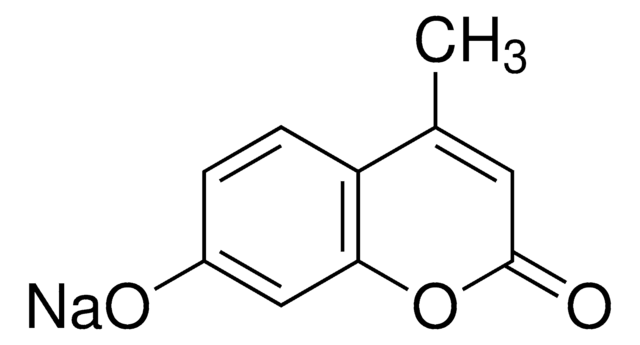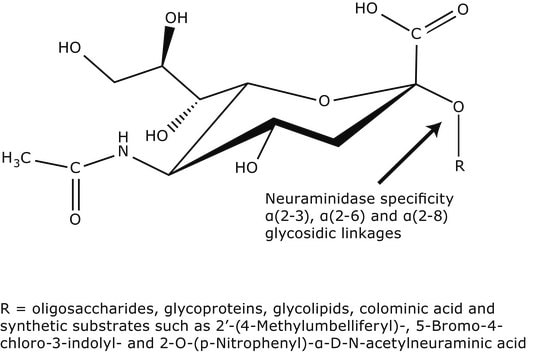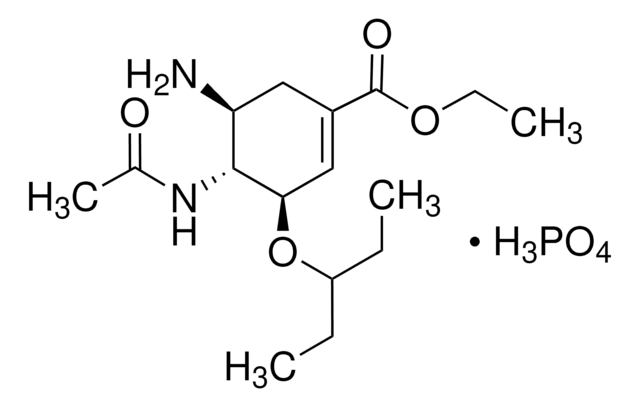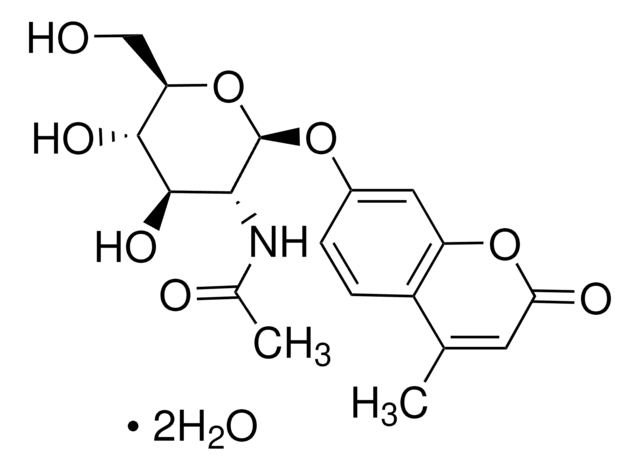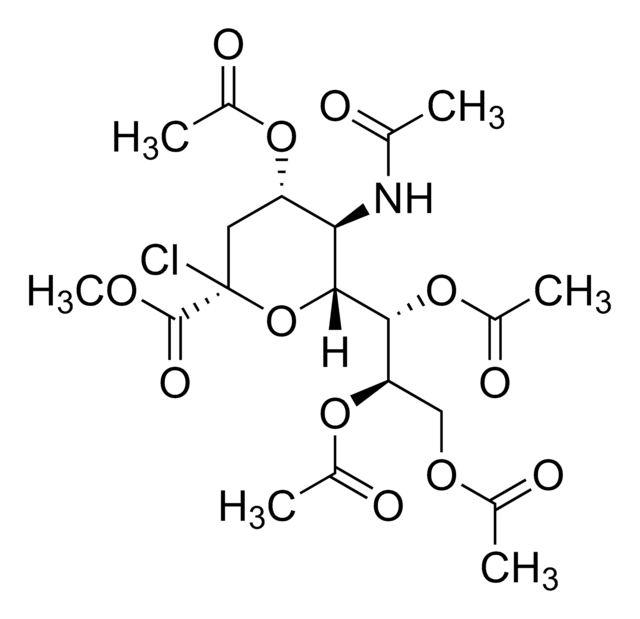Key Documents
M8639
2′-(4-Methylumbelliferyl)-α-D-N-acetylneuraminic acid sodium salt hydrate
fluorogenic, ≥95% (HPLC), powder
Synonim(y):
4-Methylumbelliferyl-N-acetyl-α-D-neuraminic acid sodium salt hydrate
About This Item
Polecane produkty
product name
2′-(4-Methylumbelliferyl)-α-D-N-acetylneuraminic acid sodium salt hydrate, ≥95% (HPLC)
Poziom jakości
Próba
≥95% (HPLC)
Postać
powder
rozpuszczalność
water: 50 mg/mL, clear to slightly hazy, colorless to light yellow
temp. przechowywania
−20°C
ciąg SMILES
O.[H]C(O)(CO)[C@]([H])(O)[C@@H]1OC(C[C@H](O)[C@H]1NC(C)=O)(Oc2ccc3C(C)=CC(=O)Oc3c2)C(=O)O[Na]
InChI
1S/C21H25NO11.Na.H2O/c1-9-5-16(27)31-15-6-11(3-4-12(9)15)32-21(20(29)30)7-13(25)17(22-10(2)24)19(33-21)18(28)14(26)8-23;;/h3-6,13-14,17-19,23,25-26,28H,7-8H2,1-2H3,(H,22,24)(H,29,30);;1H2/q;+1;/p-1/t13-,14?,17+,18?,19+,21+;;/m0../s1
Klucz InChI
NSQMRVBWXQQIKF-NVRWCLOTSA-M
Szukasz podobnych produktów? Odwiedź Przewodnik dotyczący porównywania produktów
Działania biochem./fizjol.
Kod klasy składowania
11 - Combustible Solids
Klasa zagrożenia wodnego (WGK)
WGK 3
Temperatura zapłonu (°F)
Not applicable
Temperatura zapłonu (°C)
Not applicable
Środki ochrony indywidualnej
Eyeshields, Gloves, type N95 (US)
Certyfikaty analizy (CoA)
Poszukaj Certyfikaty analizy (CoA), wpisując numer partii/serii produktów. Numery serii i partii można znaleźć na etykiecie produktu po słowach „seria” lub „partia”.
Masz już ten produkt?
Dokumenty związane z niedawno zakupionymi produktami zostały zamieszczone w Bibliotece dokumentów.
Klienci oglądali również te produkty
Nasz zespół naukowców ma doświadczenie we wszystkich obszarach badań, w tym w naukach przyrodniczych, materiałoznawstwie, syntezie chemicznej, chromatografii, analityce i wielu innych dziedzinach.
Skontaktuj się z zespołem ds. pomocy technicznej


